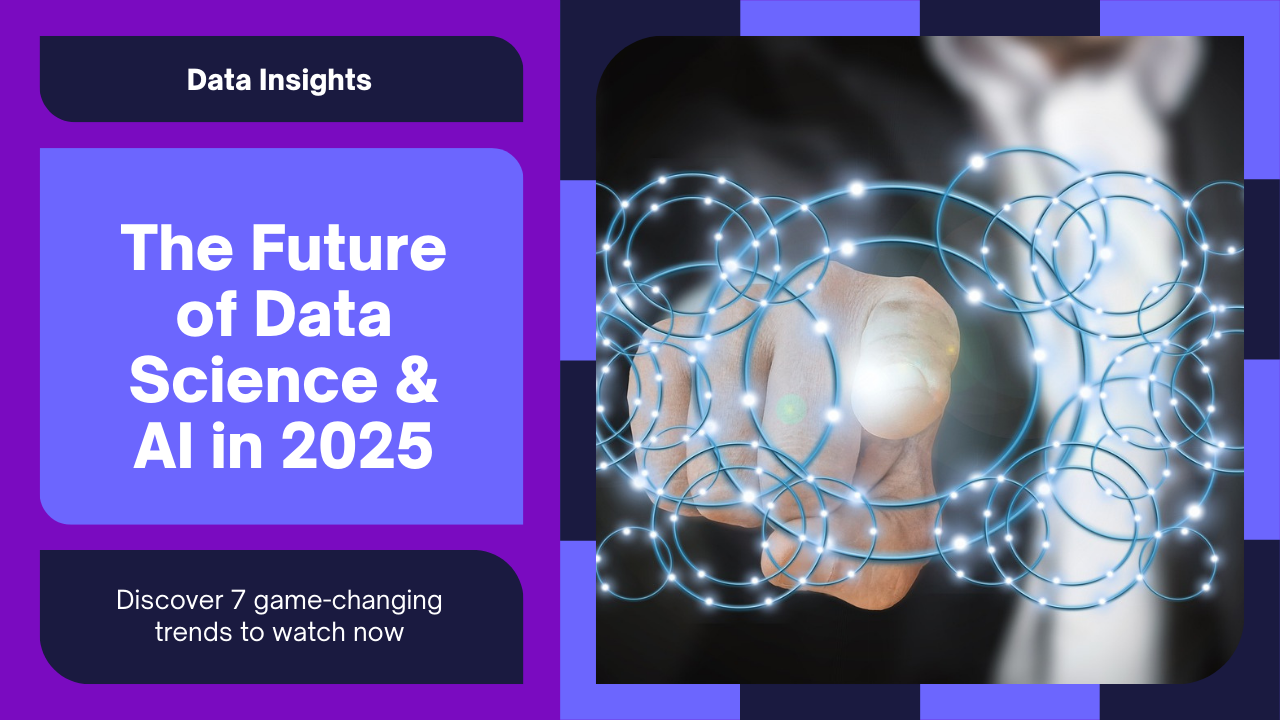Artificial Intelligence (AI) and Data Science have evolved from buzzwords to core drivers of digital transformation across industries. As we navigate through 2025, these technologies are no longer just shaping tech—they’re defining the future of work, learning, and everyday life. But what specific trends are redefining the AI landscape this year? And how can businesses and professionals stay ahead of the curve?
In this article, we explore seven key data science and AI trends in 2025 that are not only exciting but also packed with real-world impact.
1. AI Agents Are Becoming Autonomous Collaborators
Forget simple chatbots—2025 is the year of autonomous AI agents. Thanks to breakthroughs in reinforcement learning and multi-agent systems, AI agents can now perform complex tasks, collaborate with humans in real-time, and even make strategic decisions independently.
-
Use case: In customer service, AI agents now handle entire workflows—from complaint resolution to personalized upselling—without human intervention.
-
Takeaway: Companies that adopt agent-based AI can dramatically reduce operational costs and boost efficiency.
2. Synthetic Data Is Solving the Data Dilemma
Access to quality data remains a hurdle in machine learning. Enter synthetic data—AI-generated data that mimics real-world datasets while protecting privacy.
-
Why it matters: It’s GDPR-compliant, scalable, and ideal for training AI models in finance, healthcare, and beyond.
-
Trend insight: Gartner predicts that by 2030, synthetic data will overshadow real data in AI model training. In 2025, it’s already well on that trajectory.
The Rise of Small Data: Why Less Is Becoming More in AI
3. Explainable AI (XAI) Is No Longer Optional
With AI systems influencing hiring, lending, and medical decisions, transparency is a must. Explainable AI focuses on making models interpretable and justifiable to non-technical users.
-
Example: Financial institutions now deploy XAI to justify loan approvals, increasing trust and compliance.
-
SEO Tip: Expect more organizations to integrate XAI frameworks like LIME, SHAP, and Google’s What-If Tool into production systems.
4. Generative AI Is Evolving Beyond Text and Images
Generative AI has already transformed how we create content—but in 2025, it’s expanding into video, 3D design, and code generation.
-
Real-world application: Startups are using generative AI to create product prototypes and marketing videos in minutes.
-
Monetization angle: Expect a surge in low-code platforms powered by GenAI, lowering the barrier to entry for digital entrepreneurs.
5. Edge AI Is Making Devices Smarter and Faster
AI is moving closer to the source of data with Edge AI, reducing latency and enhancing privacy. Think AI on your smartwatch, not the cloud.
-
Industry use: Retailers use edge devices for real-time shelf monitoring; healthcare wearables analyze patient data instantly.
-
Why this matters: With growing demand for real-time insights and data privacy, Edge AI is essential for scalable, secure solutions.
6. AI and Data Science Are Powering Personalized Learning
Adaptive learning is no longer a theory—it’s being deployed in classrooms and corporate training programs worldwide.
-
What’s new in 2025? AI-driven systems now personalize content delivery based on Zone of Proximal Development (ZPD), learning pace, and performance metrics.
-
Result: Better engagement, improved learning outcomes, and reduced dropout rates.
7. The Rise of AI Governance and Regulation
Regulators are catching up with the AI boom. The EU AI Act is already influencing global standards, while countries like the UK, Canada, and Nigeria are drafting their own AI policies.
-
Trend implication: Ethical AI isn’t just a good practice—it’s a compliance requirement.
-
Tip for developers: Build AI with bias detection, audit trails, and compliance flags from day one.
Final Thoughts: What This Means for You
Whether you’re a data scientist, tech entrepreneur, or business leader, these trends signal one clear message: AI is growing smarter, faster, and more intertwined with our daily lives. To stay competitive in 2025 and beyond:
-
Invest in upskilling and certifications (think: TensorFlow, PyTorch, GenAI tools).
-
Leverage AI not just for automation—but for innovation.
-
Align your business with ethical AI frameworks to future-proof your operations.






